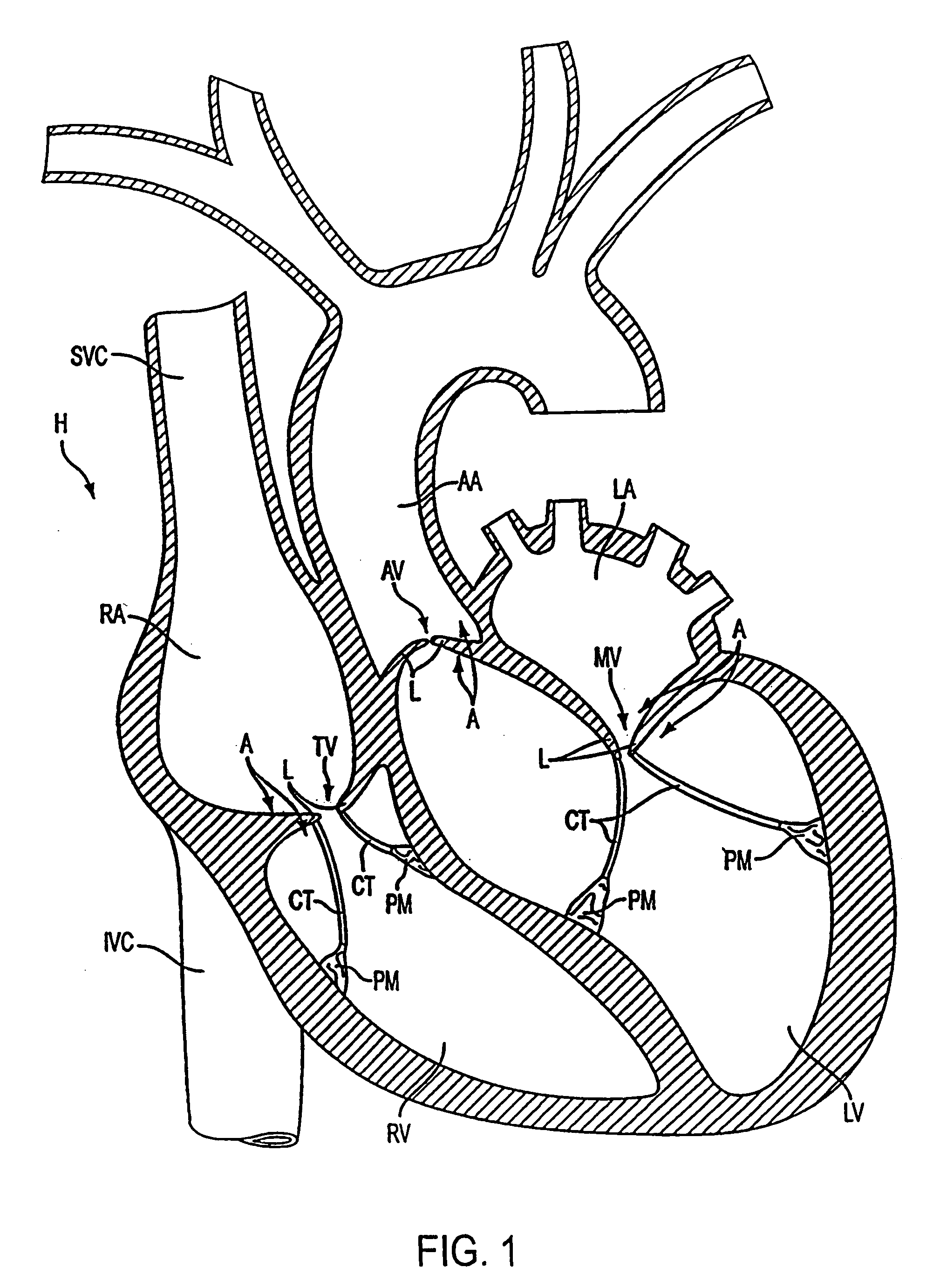Apparatus and methods for treating tissue
a tissue and apparatus technology, applied in the field of tissue treatment, can solve the problems of chordae tendineae loosening, less effective valves, etc., and achieve the effects of reducing the diameter of the annulus, improving or restoring tissue function, and shrinking the tissu
- Summary
- Abstract
- Description
- Claims
- Application Information
AI Technical Summary
Benefits of technology
Problems solved by technology
Method used
Image
Examples
Embodiment Construction
[0060]With reference to FIG. 1, a sectional view through human heart H is presented. Major structures labeled include the right atrium RA, left atrium LA, right ventricle RV, left ventricle LV, superior vena cava SVC, inferior vena cava IVC, and ascending aorta AA. Structures that may be involved in valvular degeneration and regurgitation are also labeled, including the papillary muscles PM, chordae tendineae CT, valve leaflets L, and annuluses of tissue surrounding the leaflets A, as well as the tricuspid valve TV, the bicuspid or mitral valve MV, and the aortic valve AV. The pulmonary valve PV is not seen in the cross section of FIG. 1, but may also experience valvular degeneration. As discussed previously, degenerative valvular disease often leads to valvular regurgitation, which is typically characterized by an expanded valve annulus A or by lengthened chordae tendineae CT. Loose chordae tendineae may result from ischemic heart disease affecting the papillary muscles PM, which a...
PUM
 Login to View More
Login to View More Abstract
Description
Claims
Application Information
 Login to View More
Login to View More - R&D
- Intellectual Property
- Life Sciences
- Materials
- Tech Scout
- Unparalleled Data Quality
- Higher Quality Content
- 60% Fewer Hallucinations
Browse by: Latest US Patents, China's latest patents, Technical Efficacy Thesaurus, Application Domain, Technology Topic, Popular Technical Reports.
© 2025 PatSnap. All rights reserved.Legal|Privacy policy|Modern Slavery Act Transparency Statement|Sitemap|About US| Contact US: help@patsnap.com



